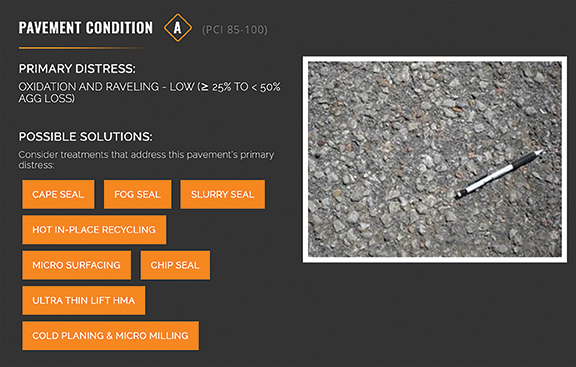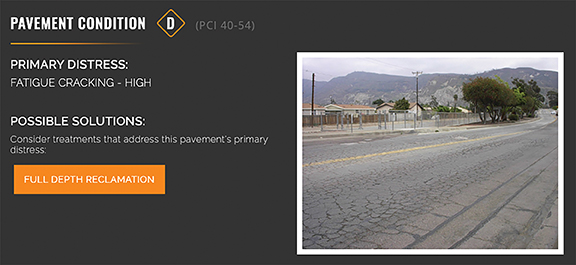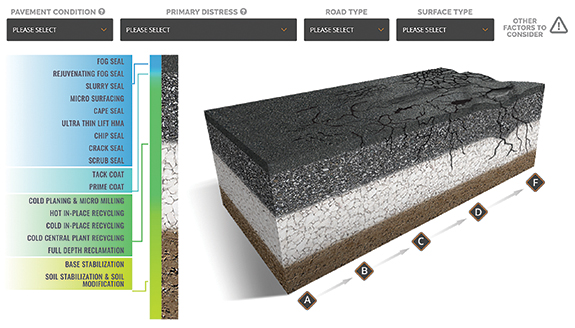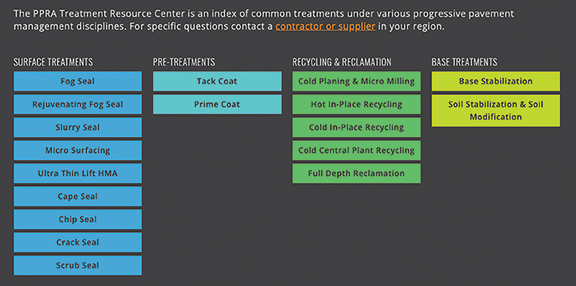We have heard many times over that the ultimate challenge for every roadway owner agency is to maintain its network at a high serviceability condition with limited and constrained road funding. As with tackling any challenge, having the best tools available for the job is key.
Treatment options including pavement preservation and pavement recycling can help any agency in this challenge. Where do road owners and agencies go for top-quality education and information on these pavement preservation and recycling treatments? They go to RoadResource.org; the free, industry-built website to equip road managers, consultants and agencies with tools and resources to help them be good stewards of road networks and taxpayers’ dollars.
RoadResource.org
Launched in 2018, RoadResource.org is a free tool for managers, consultants and agencies provided by the collective resources of the Pavement Preservation and Recycling Alliance (PPRA). PPRA is the strategic alliance of three industry organizations: Asphalt Emulsion Manufacturers Association (AEMA), International Slurry Seal Association (ISSA) and the Asphalt Recycling and Reclamation Association (ARRA). Over 60 industry leaders and volunteers from these associations from the United States and Canada provided information and content to help educate and aid roadway managers and agencies.
One of the many industry organizations that provided their collective expertise and time into the development of RoadResouce.org is Slurry Pavers headquartered in Richmond, Virginia. Their collective offering of services includes multiple pavement preservation treatments, micro surfacing and full-depth reclamation. They are active members of all three PPRA associations as well as an Associate Member of the Asphalt Institute. Slurry Pavers, Inc. teammates; Matt May and Chuck Ingram (former ISSA president), are very active in the content development and future direction of RoadResource.org as members of the PPRA Synergy team that focuses on improvements to the website.
Right treatment for the right road at the right time
Where do you go to begin to understand how pavement preservation and recycling make sense to correct the problems with their road?
May and Ingram stressed the value and many benefits of the website:
“The first feature we think is helpful to anyone who wants to learn about preservation and recycling and isn’t sure where to start is found in the Treatment Toolbox under ‘What Treatment is Right for My Road.’ There are two parts to this. The first is an interactive road cut-away diagram that lets one visualize the treatments that are appropriate in different situations. The user can mouse over the graphic or use a drop-down menu with PCI rating, primary distress, road type and surface type to really dial it in. Then there’s a complementary section with photos of actual road conditions that basically does the same thing. If users aren’t sure what kind of distress they have or what treatment might help, they can look through the photos for various road conditions similar to what they’re trying to address and go from there.”
The resounding theme behind the website is to educate and equip decision-makers with tools to select the right treatment based on current road conditions at the right time in that road’s life cycle. The website provides education based on current road conditions. To better understand how this feature performs, refer to Figures 1 and 2.
Figure 1 shows an example of a pavement that is showing low-level signs of oxidation and raveling. The possible solutions offered for this pavement in the Pavement Condition Index (PCI) range of 85-100 include and are not limited to cape seal, fog seal, ultra-thin lift HMA overlay or a chip seal.

Figure 1. Explore by Pavement Condition Feature for a Pavement with Low-Level Raveling
Likewise, if the pavement is showing signs of heavy fatigue cracking like the pavement featured in Figure 2, the website provides guidance to users to consider a deeper treatment to correct the pavement deficiency. In this case, it offers full-depth reclamation (FDR) as a possible solution, as the typical preservation treatments would not be able to correct the full-depth fatigue-type cracking plaguing this pavement example.

Figure 2. Explore by Pavement Condition Feature for a Pavement with High Fatigue Cracking
For a more holistic perspective on how and why these treatments are best used during different times of a pavement’s serviceable life, the website offers an interactive option to provide users guidance for the right treatment on the right road and the right time. Figure 3 displays this feature, which by some in our industry refer to as the “ice cream sandwich” tool.
The tool features a hypothetical pavement with varying levels and types of distress that range from A (Pavement Condition Index (PCI) range of 85-100 or excellent condition) to F (where more severe structural type distresses are contributing to a PCI range of 0 – 39, or poor condition). The example featured in Figure 3 shows the highlighted section where, in this scenario, CIR (cold in-place recycling) would address and correct distresses in the upper layers of the pavement section (as shown in the green highlight.) The user can select a treatment type and the tool will highlight portions of the “ice cream sandwich” that the respective treatment would properly address.

Figure 3. Interactive Explore by Pavement Criteria Tool
Apply treatments with confidence and success
The next feature the team recommended was the vast amount of information contained in the Treatment Resource Center.
“One of the most beneficial features is the in-depth treatment info for all 18 featured pavement treatment options to learn about on the site. Each treatment has a helpful summary to get a good overview and then there are numerous sections with more in-depth information. There’s a lot to learn and there’s enough information there to get a good working knowledge of all of it. And once a user has discovered some options that might address their specific conditions, they can take a deeper dive into them there.”

Figure 4. The 18 Treatments Featured in the RoadResource.org Treatment Resource Center.
RoadResource.org contains comprehensive information on 18 preservation and recycling treatments (shown in Figure 4) including fog seals, crack sealing, CIR and even soil stabilization. For each of these treatments, information is available to better understand which pavement issues they can properly address, how the treatments are applied as well as guidelines on proper construction preparation, construction, and quality assurance. Users can also find guidance on how to develop specifications, learn from success stories and get connected to research on each treatment.
For example, if a user is seeking information on slurry seals, the treatment center provides a deeper dive into why and how they are selected, constructed and tested. Key features including generalized cost savings, pavement life extension, and pavement issues addressed are featured alongside the preconstruction, construction and quality assurance guidelines and recommendations.
Optimize your network
May and Ingram also stressed the benefit to agencies on how they can apply these treatments over an entire road network for maximizing overall condition and getting the most out of each dollar spent.
“The last feature that sort of rounds it out is the set of network optimization calculators. There are ones for Life-Cycle Cost, Equivalent Annualized Cost, Remaining Service Life and Cost Benefit Value. With a working knowledge of potential treatments, users can then use the calculators to model how different scenarios might work within their specific budget and network. They can see results in terms of how they might optimize budgeting, forecasting, sustainability and return on investment (ROI). Registered users can even confidentially input data specific to their network including local pricing, PCI, etc. When they do, they can essentially get real-time, real-world feedback on ways they can optimize their network management and probably see some real positive gains. With that, they can then take all that real-world information and utilize it in their planning and budgeting process.”
These free network optimization tools are available to an agency, consultant, or roadway manager to take their network to the next level. RoadResource.org houses an LCCA tool for agencies that may not have a pavement management system to optimize treatment decisions for individual projects and their entire network. Figure 5 highlights how hypothetical networks that employ preservation and recycling treatments compare to those that do not.

Figure 5. LCCA Comparison from RoadResource.org
Get information and get connected
Are you still looking for a solution and need more information? The website contains multiple avenues for users to get connected and get more information.
Is there a question that you cannot find the answer to on the website? Check out the “Ask an Expert” feature, where users can submit a specific technical question and connect with either AEMA, ISSA or ARRA’s technical response team.
Are you interested in connecting with a supplier or contractor to better understand a process? The website enables users to search for suppliers or contractors based on geography and the type of services offered.
Interested in hearing from other agencies about how they are optimizing their roadway networks? Check the recorded webinars section on RoadResource and hear from agencies like Bedford, Massachusetts or Polk County, Florida and hear how they are making gains using these pavement treatment technologies and network optimization tools.
Those interested in staying connected on news and opportunities related to RoadResource are encouraged to enroll in the PPRA Industry News emails on the homepage.
Those interested in learning more about these network optimization tools can enroll in the virtual Roadvocate class that is offered twice per year through the website. This class provides participants training on how to determine the best solutions for their network budgets, evaluate the effectiveness of their annual treatment plans and understand how they can prioritize road projects with limited funds using the optimization tools.
Education tool for tomorrow’s road networks
RoadResource is a treasure trove of information for all things related to pavement preservation and recycling. The collective PPRA effort is to continue to have this central repository of relevant and valuable information on these technologies available to all roadway managers, consultants and agencies. Having this central platform not only to educate on these technologies but also to celebrate wins and share success stories is paramount.
“I hope the future state of RoadResource.org is that it’s unnecessary. Obsolete,” said Matt May.
“I say that because I hope that every single road administrator, every engineer and everyone approving plans and budgets will already have a working knowledge of everything that is promoted on the site. I hope one day they’ll already be familiar with and trust in the preservation and recycling options available to them. I hope one day they’ll all insist on preservation and recycling as a matter of course. I hope they will all promote a philosophy that prioritizes protecting our infrastructure investments above all so we can manage our networks in the most sustainable way,” May added.
In closing, May and Ingram summed it up perfectly.
“There will probably always be a place for RoadResource.org to remain the go-to website for everything asphalt preservation and recycling. There will always be a need for someone, somewhere to be able to find a one-stop shop where they can find the most useful and up-to-date information about preservation and recycling treatments as well as various planning tools to help them figure out what might work best for them.”
Wielinksi is an Asphalt Institute Regional Engineer based in Ohio.













